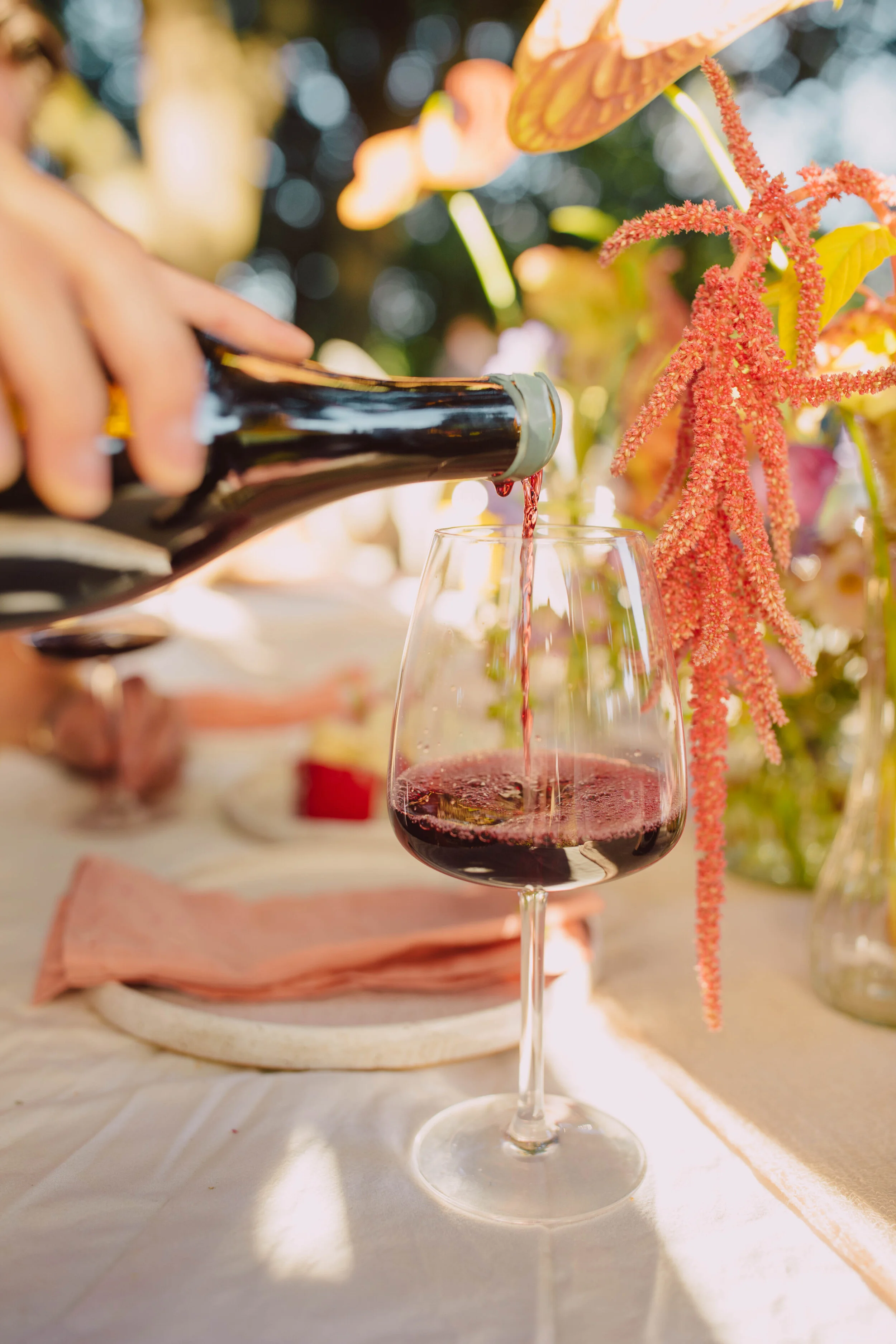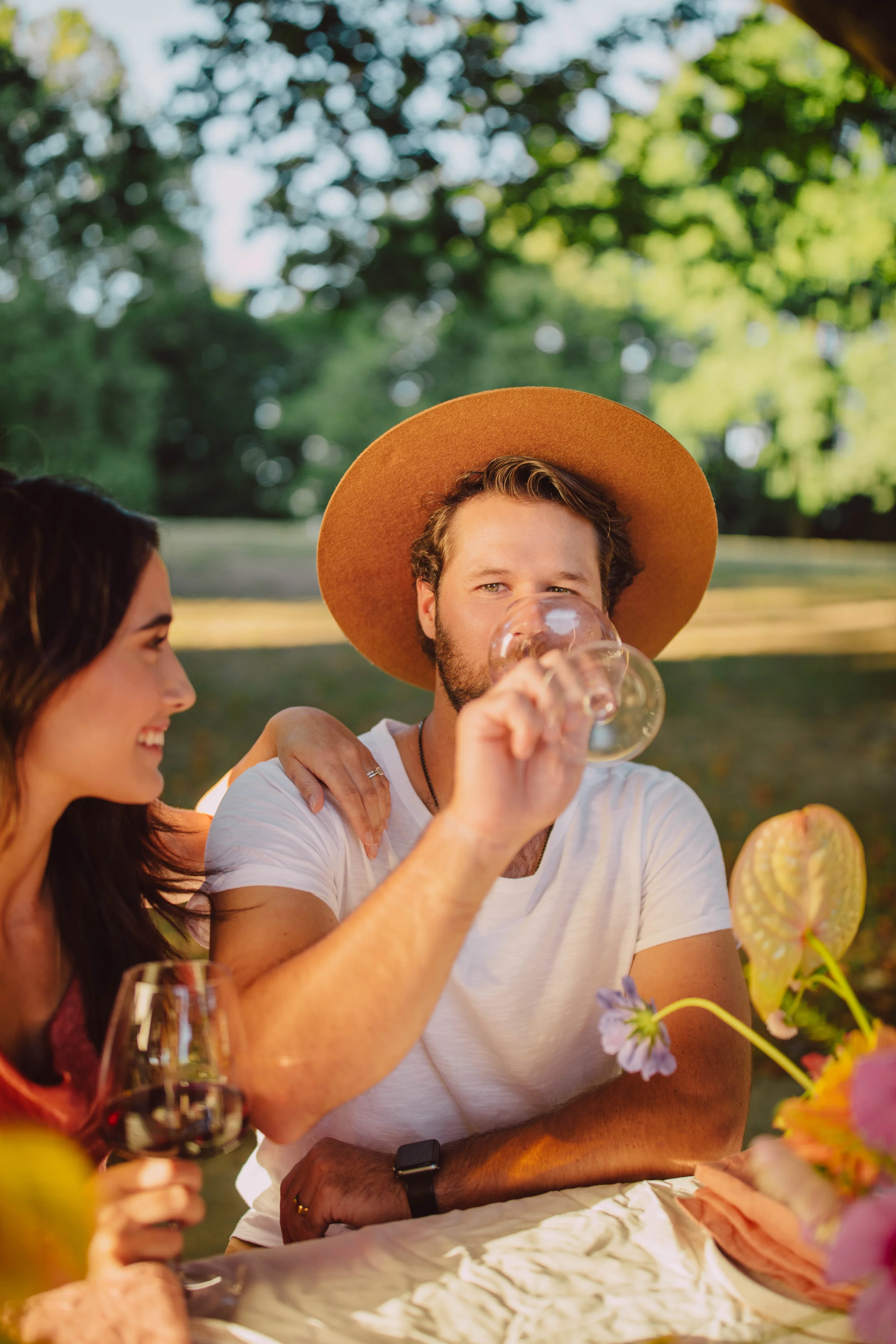How To: Blind Wine Tasting at Home
How to Blind Taste Like A Pro
Written by Madison Cope, Certified Wine Sommelier
Photography by Emily Joan Greene
Featuring Pray Tell Wines
The best thing to do when first learning about your personal tastes in wine is to taste blindly. Blind tasting allows you to objectively decide, without being swayed by a wine’s price, popularity, prestige, or the opinions of others, which wines you really love to drink. And as an added bonus, it’s super fun and makes for a great date night or evening with friends!
WHAT YOU’LL NEED
All you’ll need is 2-4 wines, a white background (our Tasting Grid Guide works perfect) and something to take notes with! It’s also recommended to designate someone to pour the wines discretely so that the other participants don’t know which wine is being presented.
HOW TO BLIND TASTE
Grab your Tasting Grid Guide download and get ready! (At the bottom of this post)
1. Sight: What does the wine look like?
Begin by holding your wine over a white background at a 45-degree angle. This allows you to best view the color, depth of color, and viscosity of the wine.
Red wines range from bright ruby, to garnet or even purple and vary in the concentration or density of color. Tip: Hold your thumb under the glass, and if you can still see it through the wine, it is likely a thin skinned grape variety such as Pinot Noir, Sangiovese, Nebbiolo, Gamay or Grenache. If you can’t see your thumb through the wine, it's likely a thick skinned variety such as Cabernet Sauvignon, Syrah, Malbec, or Zinfandel.
White wines range from a pale straw, to yellow or even gold.
The color of the wine is just the first clue to what the grape variety could possibly be!
Next step is to move on to the nose and palate, where we begin to take note of the specific aromas we smell and taste in the wine.
2. Nose: What does the wine smell like?
Smell, swirl the wine, and smell it again. Gently swirling the wine in your glass aerates the wine, making the aromas easier to smell.
For the nose, try to be as specific as possible with the aromas you pick up, focusing on:
Intensity
How fragrant is the wine? Are you able to smell the wine from a few inches away, or do you really have to stick your nose in the glass to notice any aromas?
Fruit
For red wine, consider if it smells predominately like red fruits (raspberry, cherry, strawberry), black fruits (blackberry, plum, currant), or blue fruits (blueberry, boysenberry)
For white wine, consider if it mostly smells like citrus fruits such as lemon, lime, and grapefruit, tropical fruits like pineapple, lychee, and passionfruit, or stone fruits like apple, pear, peach, or apricot.
It is also important to think about the quality of the fruit you smell. For example, consider if the fruit is under-ripe, ripe, jammy, dried, stewed, or something else? Does it smell baked like a fresh berry pie, or sour like an under ripe Granny Smith apple?
Floral
Do you smell any floral notes such as white blossoms, purple flowers, rose, etc.? For me, rose always smells like my grandmother’s perfume.
Earth
What earthy flavors and smells are in the wine? Such aromas and flavors include mushroom, herbs, the smell of a damp forest floor, or minerality. For minerality, think of the smell of standing next to a waterfall or at the bank of a river.
Oak
Oak in wine smells like vanilla, toast, chocolate, baking spices such as cinnamon and nutmeg, coconut, smoke, cedar, and oak itself. All of those warm and cozy spiced notes!
Other
Anything else you notice! Vegetables, bread, nuts, meat, anything!
3. Taste: What does the wine taste like?
Next, taste the wine to determine if there are any additional flavors or notes that you pick up on the palate that you didn’t on the nose.
Next, taste the wine to determine if there are any additional flavors or notes that you pick up on the palate that you didn’t on the nose. Take a sip, but before swallowing it, allow the wine to move around in your mouth, completely covering the entirety of your palate. You pick up different tasting notes in different places on your palate, so this is important!
During this step, we taste the wine to determine the wine’s structure or what it feels like.
Take another sip of wine, and once again, allow the wine to cover the entirety of your palate.
Pay attention to:
Body
How heavy does the wine feel in your mouth? Think of the difference between skim milk and full fat milk when you take a sip.
Acidity
Acidity can be described as how tart or sour the wine is. It is the mouthwatering sensation and zing in your cheeks – just like biting into a lemon!
Tannins
Tannins is what causes the dry feeling you get in your mouth after taking a sip of certain big red wines. Think of the feeling of biting into an under-ripe banana or sipping on over-steeped tea!
Alcohol
How warm does this wine feel in your mouth, throat, and chest after taking a sip? The warmer it feels, the higher the alcohol content.
Sweetness
Often, people confuse fruitiness for sweetness. Remember, sugar is odorless and can’t be smelled. Rather, evaluate if the wine truly feels/tastes sweet on the palate, ignoring other tasting notes and what the wine smells like.
Conclusion: What wine is it?
You can think of blind tasting as collecting clues that leads you closer and closer to determining what the wine may be based on its distinguishing characteristics.
All grape varieties and even certain wine regions of the world have distinguishing characteristics. For example, Chardonnay from the region Chablis in France is high in acidity and always has a distinct smell and taste of minerality and salinity due to the region’s soil consisting of chalk and oyster shells that was once at the ocean floor. Nebbiolo from Italy is always extremely tannic and often has notes of leather and rose.
Professionals spend years upon years, learning these wines and their defining traits, so that they will be more identifiable when blind tasting. However, as a wine consumer and not an industry professional, it is most important for you to blind taste to simply learn more about your personal preferences! Make the best educated guess you can based on the clues you picked up throughout the tasting process.
But most importantly, ask yourself if you like the wine! As I first mentioned, blind tasting is an excellent way to get to know your own personal taste without any bias or preconceived notions about the wine you are consuming! Take note of the types of wines you enjoy and what wines you don’t and the common tasting notes. This will begin to tell you a lot about grape varieties or wine regions you prefer and will make purchasing wine, whether in store or at a restaurant much easier!
ARE YOU READY FOR YOUR FREE BLIND TASTING GRID? FILL OUT YOUR INFO AND YOU’LL IMMEDIATELY SEE A LINK TO DOWNLOAD.
DOWNLOADS CREATED BY Madison Cope.



